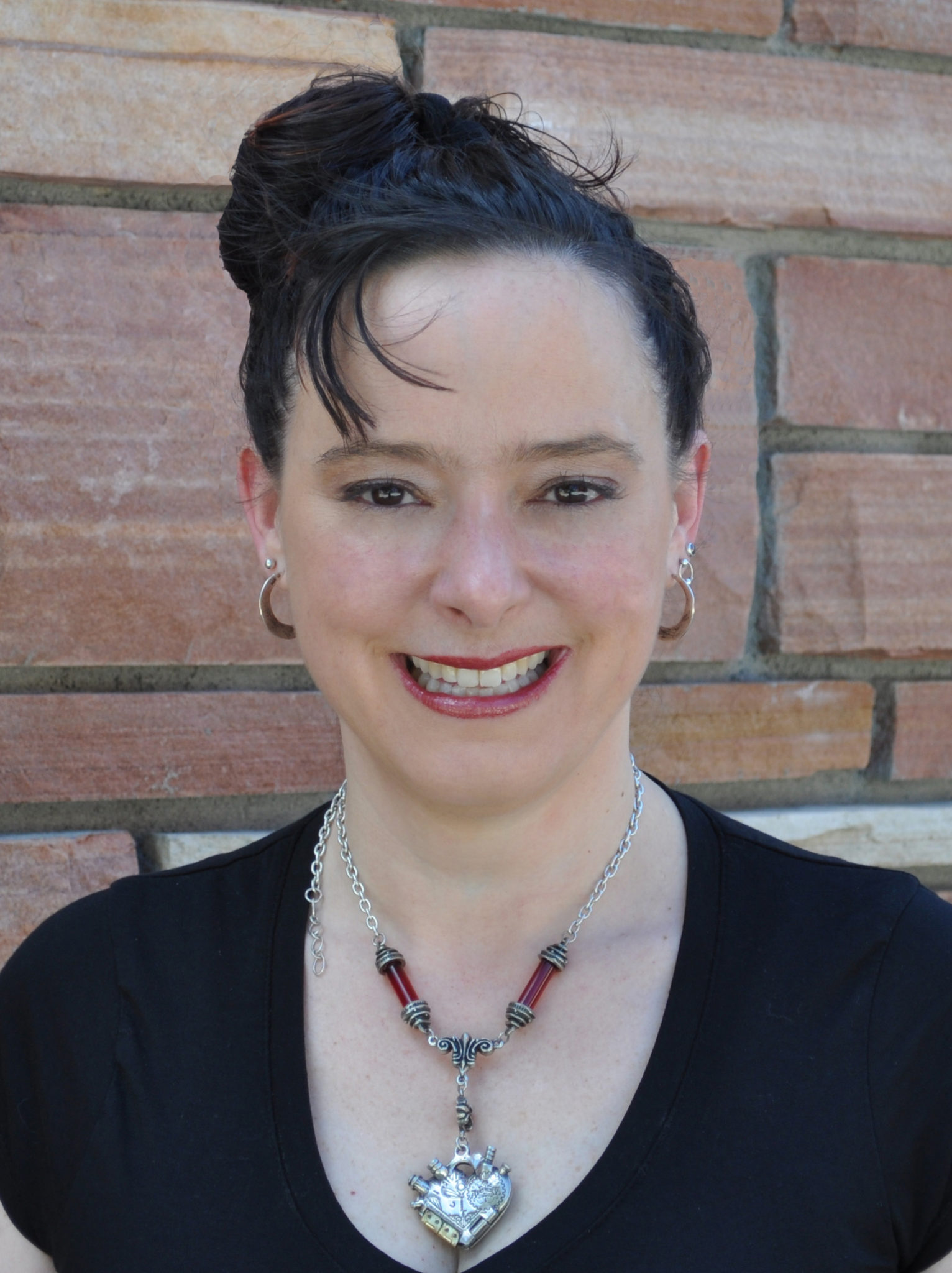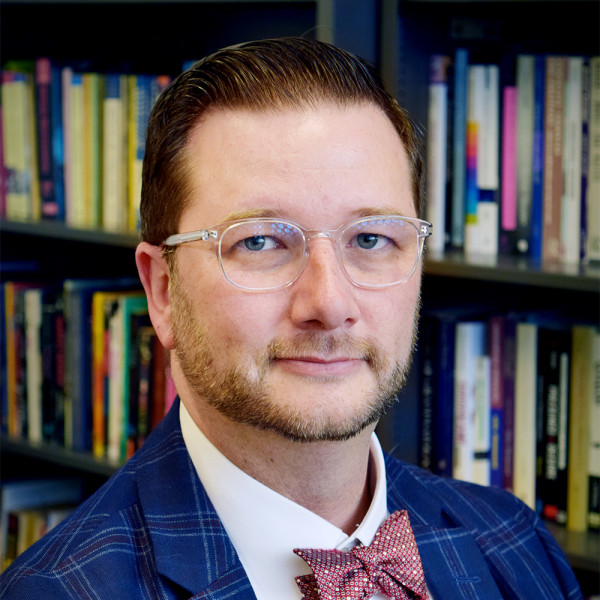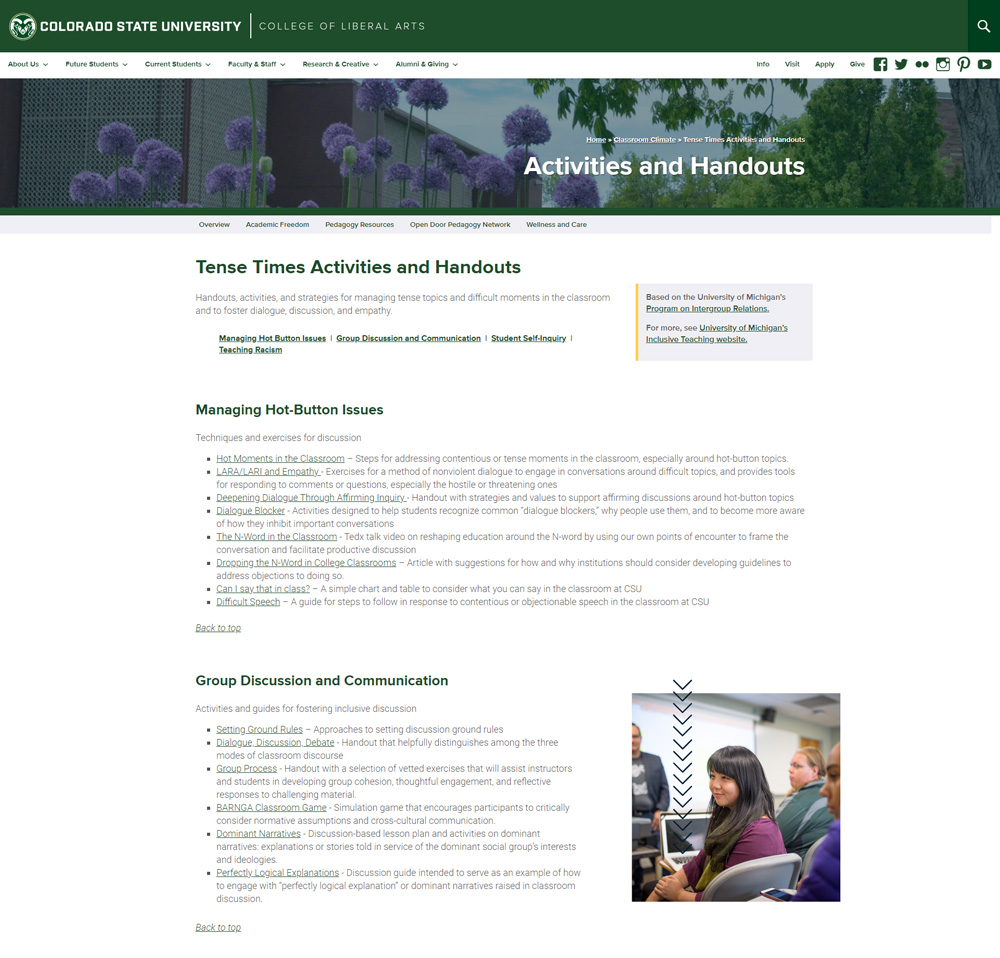
With a global pandemic, a presidential election, and escalating tensions around racial and social justice, challenging conversations and tense moments will distinguish the classroom experience this fall. And the liberal arts disciplines provide the expertise, reflection, and knowledge to address these tensions.
In any liberal arts education, challenging conversations are part of the process. It’s the nature of studying the human condition: whether talking about race, gender, politics, economics, the environment, health, art or literature, questions around who is represented and who isn’t, who has access and who doesn’t, which stories get told and which don’t. These are the conversations and analyses that move people to consider viewpoints and perspectives they may not have before. Learning to be open-minded, empathetic, and to ask critical questions are essential components of a liberal arts education – and of being civically engaged in a democracy.
Classroom Climate: Open Inquiry in the Liberal Arts Classroom
Website created to equip faculty, students, and staff with tools to meet the challenges of cultivating an inclusive and engaged classroom.
Seeing a need to provide faculty and students with information about their rights and responsibilities in a University setting, a group of faculty from the College of Liberal Arts convened to discuss academic freedom, the first amendment, CSU’s Principles of Community, inclusive teaching, and wellness.
In Fall 2019, the committee was tasked by the dean, Ben Withers, with developing resources to support faculty as they approach the most important questions of the day while cultivating a classroom climate conducive to open inquiry and engaged learning for everyone. The charge was adjusted in spring 2020 to integrate considerations around the Coronavirus and recent political protests. A fundamental driver for the project was to increase conversations and discussion around academic freedom and inclusive pedagogy at the department level.
“We face an existential problem today: how do we engage in civil and productive conversations about the crucial issues in Colorado and in the United States that divide us?,” says Withers.
“Our success as a university depends on helping students to ask this basic question of themselves and each other. The College of Liberal Arts leads in this, and my challenge to the faculty was how we could prepare ourselves for the challenges ahead.”
The team, led by Rosa Mikeal Martey and Ryan Claycomb, created resources, trainings, strategies, and support for College of Liberal Arts faculty of all ranks to use.
“One of the things that really appealed to me about this project is that it is extremely practical and provides concrete support while also tackling the bigger picture concerns around inclusion and academic freedom,” says Martey, a professor in the Department of Journalism and Media Communication.
“I wanted to participate in better supporting my colleagues. . . . But I also wanted to explore the topic; as someone who often teaches material with sensitive subjects, I knew that a deeper look at how to best navigate those subjects would help me create more meaningful experiences for my students, too,” says Claycomb, a professor in the English department and interim assistant dean for the College of Liberal Arts.
The four elements of the initiative include:
- Understanding academic freedom for faculty and for students
- Navigating tense moments in the classroom
- Creating a network of faculty available for casual conversations with colleagues about teaching
- Collecting resources to support faculty and staff wellness
In August 2020, the topics, discussions, handouts, and readings, along with a resource website, were delivered to department chairs who disseminated the information and facilitated conversations during faculty meetings.




“It’s especially important that the project focused on a department-level set of discussions, actions, and considerations, rather than a more top-down approach. The proactive model of teaching people how to build their classes and classroom experiences to support open inquiry within an inclusion lens from the beginning really helps, I believe, when and if conflicts or confusions come up,” says Martey.
Tom Dunn, associate professor in communication studies, director of public speaking at CSU, and member of the working group is an experienced thinker on issues of free speech and controversial topics. “One of the goals of these department trainings is so that people know where to go to get answers when they run into a hard conversation or challenging situation,” he says.
Tension-filled encounters in college classrooms provide both a challenge and a learning opportunity for everyone.
“Universities cannot function as universities without a robust commitment to academic freedom, which very much includes a culture of free speech, free expression, and free inquiry,” says Matt Hitt, associate professor of political science.
“I’m a political scientist with research interests in law and courts. While I’m not an attorney, I do enjoy reading Supreme Court decisions and interacting with legal scholarship. As such, I tried to make sure our discussion of academic freedom and the first amendment was well-grounded in the scholarly understandings of these issues,” he says.
Though the materials were designed specifically for College of Liberal Arts faculty, the resources are available to anyone teaching at CSU and beyond on the project’s website.

“The resources on the Classroom Climate website are valuable for faculty in any discipline—understanding student and faculty academic freedom in the classroom is an issue in every classroom on campus and the resources for promoting inclusivity will help STEM faculty and students as much as they will help those in the liberal arts,” says Claycomb.
“I really hope that faculty and instructors feel more comfortable discussing ideas and challenges to academic freedom and inclusive practice with each other,” says Martey. “I also hope that they can start to see academic freedom and open inquiry as intertwined with inclusive practices, rather than in opposition to them,” says Martey.